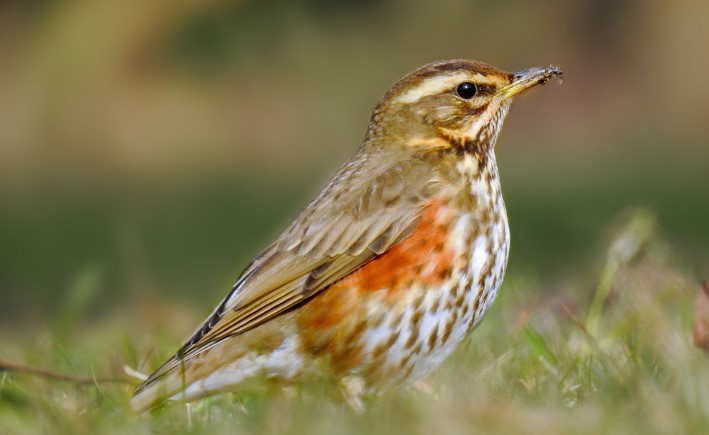Family: Origma or Rockwarbler (Origma solitaria) belongs to the family Acanthizidae in the order Passeriformes.
Habitat: The Origma is unique among Australian warblers in constructing its nest in a darkened rock cavern. The nest is delicately suspended from a projection, and when the bird alights to feed the young, it swings back and forth. Their curious nature leads them to investigate rock crevices and leaf litter, and they are nimble and agile in moving vertically up rock faces.
Origmas are usually sedentary and territorial; they live in pairs, with the young remaining only for a short time after breeding to form small family parties. They may, however, leave dried-up creeks over the summer. The bird is constrained by habitat; it is confined to the central New South Wales coast and fringing ranges. They occur on the craggy, dissected sandstone cliffs of the Hawkesbury formation and have often been thought limited to them.

Identification: Both sexes are similar. The upper parts are plain dark brown with a rufous wash on the rump; the tail is black. The face and forehead are flecked cinnamon-brown. The throat is dull-white, speckled black; the rest of the underparts are deep rufous. The eyes are red-brown. The bill is dusky. The feet are dark brown. The immature (as adults) are a little duller.
Behavior: They do, nonetheless, range onto adjacent limestones. Permanently fresh-watered ravines are the common denominator. Origmas forage over the rock faces, hopping methodically along, moving their bodies from side to side, and flicking their tails sideways. Swift dashes over rock faces that are broken, creeping into crevices as they poke about. They are even able to work along vertical faces and the underside of overhanging clefts.
Vocalizations: The origma call is slightly liquid, rasping single notes; harsh scolding churrs in alarm. A smooth and rasping call is considered a contact call. In the breeding season, it makes repeated chis-sick calls. However, the song consists of a series of shrill, melancholy good-byes given three or four times, as well as penetrating staccato pink. Scolding calls are similar to scrubwrens. It has the ability to mimic other birds’ calls, including grey butcherbirds, white-eared honeyeaters, eastern spinebills, rufous whistlers, and many others.
Diet: Origma’s are usually insectivores, the main food range of insects and seeds, picked up in crevices and around water margins, although some insects are caught in the air or prised from tree trunks. Moreover, they eat panic grass and wheat. Sometimes, birds hover in a short burst to catch prey.
Nesting and Breeding: Origma nesting and breeding occur in August–December. The nest is a suspended dome shape with a side entrance made of rootlets, bark strips, grasses, and moss. The nest is bound with cobwebs, lined with fine grasses, plant down, fur, and feathers, and hung by cobwebs from a minute rock cleft in the ceiling of a rock cavern, under a road culvert, or in the tunnel. There are even records of Origmas placing their nests under wire mattresses in bush shacks. The Origma uses a spiderweb to suspend its domed nest under a sandstone rock ledge.
Eggs: Origma usually has three eggs: glossy white, sometimes with faint black specks; oval, about 20 x 15 mm. The incubation period is about 22–23 days. Usually, two clutches are laid in a season.
Distribution: Origma is found on the central east coast and facing ranges north to Scone and south to Bermagui, New South Wales, in Hawkesbury sandstone and adjacent limestone formations.
Migration: Origma do not migrate except for some dry conditions.
Races: There are no races.
Other Names: This bird is also known as Rock Warbler, Cave Bird, Rock Robin, Sandstone Robin, and Cataract Bird.
Size: The Origma size measures about 120–140 mm in length and weighs around 14 grams.
Read More: Grey Whistler is a Musical Bird That Haunts Hearts







